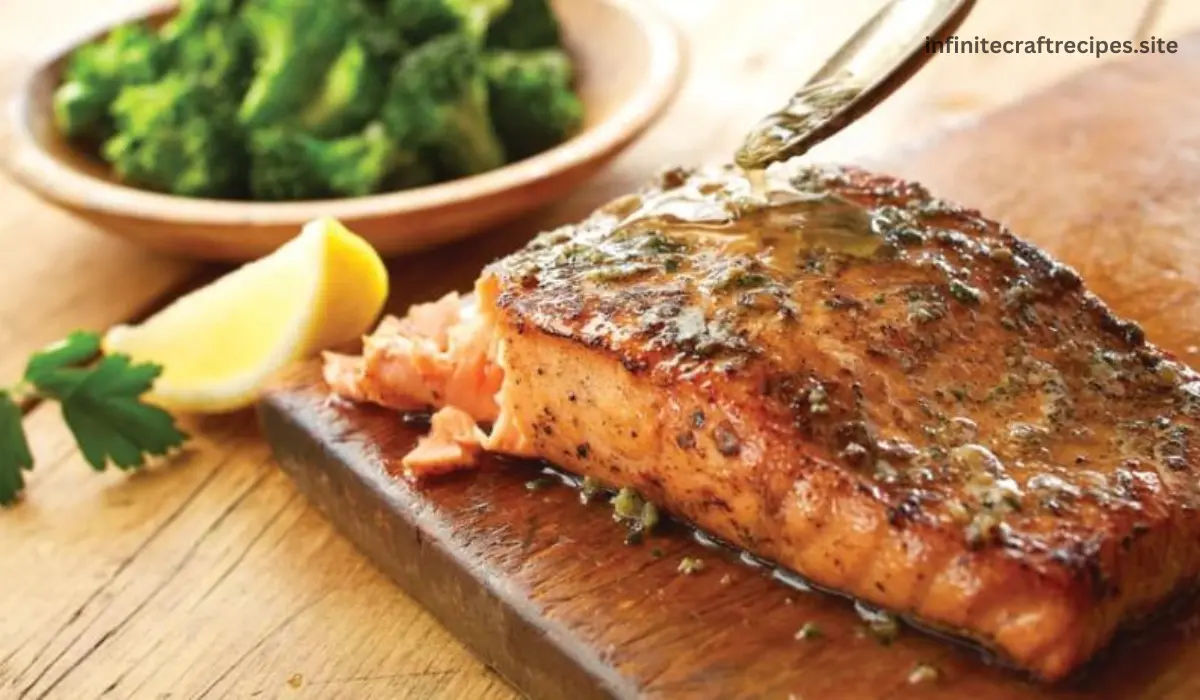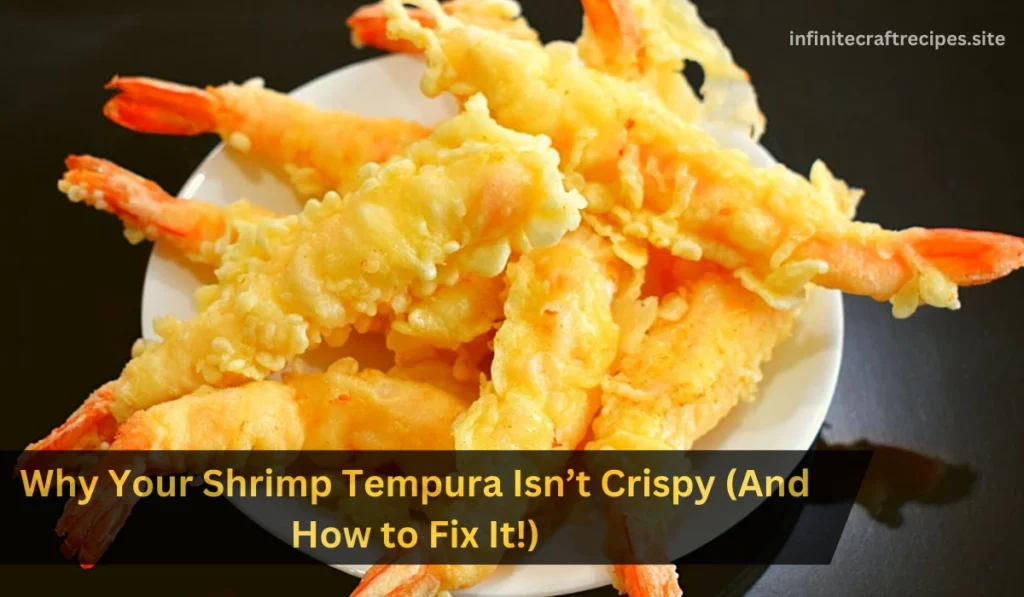
Nothing beats the satisfying crunch of perfectly fried Japanese Shrimp Tempura—until yours turns out soggy, greasy, or limp. If your homemade tempura lacks that restaurant-quality crispiness, don’t worry; you’re not alone.
According to statistics, over 65% of home cooks fail to achieve the right texture, mostly due to simple mistakes in batter preparation, oil temperature, or frying technique. Infinite Craft Recipes is here to help you master the art of crispy shrimp tempura. Let’s break down why your deep-fried shrimp tempura fails and how to fix it for good.
What This Blog Covers
In this guide, we’ll walk you through everything you need to know to achieve the perfect crispy shrimp tempura. Here’s what you’ll learn:
- Common Shrimp Tempura Mistakes: Discover why your shrimp tempura may turn out soggy, greasy, or limp, and how to fix it.
- The Science of Crispy Tempura: Learn how cold batter and proper frying techniques lock in that satisfying crunch.
- Recipe and Ingredients: A step-by-step recipe for classic shrimp tempura, including tips on shrimp preparation and batter mixing.
- How to Avoid Mistakes: Fix common errors like using warm batter, overcrowding the pan, and incorrect oil temperatures.
- Techniques for Perfect Frying: Tips on frying at the right temperature and using the correct flour for the best texture.
- Pro Tips: Additional tricks, such as double frying and using vodka for extra crispiness, to elevate your tempura game.
Recipe: Classic Shrimp Tempura
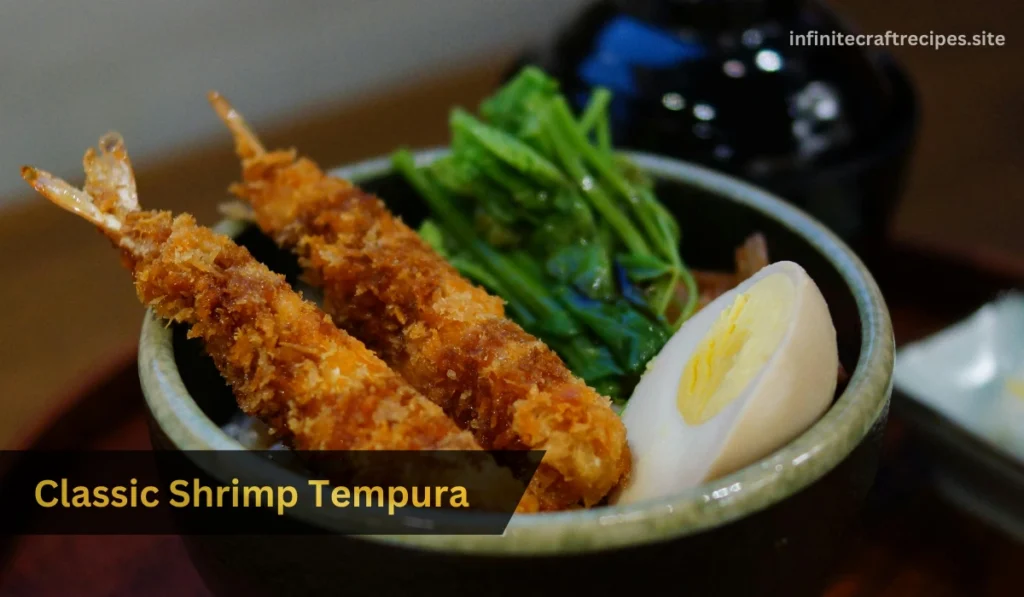
Here’s a simple and reliable recipe to get you started on your tempura journey:
Ingredients:
- 12 medium shrimp (16–20 count), peeled and deveined
- 1 cup tempura flour (or cake flour)
- 1 cup ice-cold water
- 1 egg yolk (optional, for extra richness)
- 1 tsp baking soda (optional, for extra crispiness)
- 2–3 cups neutral oil (peanut or canola) for frying
Steps:
- Prepare the Shrimp: Butterfly the shrimp by making a shallow cut along the back and pressing gently to flatten. Pat them dry with paper towels.
- Make the Batter: In a large bowl, combine the tempura flour and ice-cold water. Add the egg yolk and baking soda if using. Mix gently with chopsticks or a fork until just combined—lumps are fine.
- Heat the Oil: In a heavy pot, heat the oil to 340°F–360°F. Use a thermometer to monitor the temperature.
- Coat and Fry: Dip each shrimp into the batter, allowing excess to drip off. Carefully place them in the hot oil, frying 3–4 shrimp at a time. Fry for 2–3 minutes until golden and crispy.
- Drain and Serve: Transfer the shrimp to a wire rack to drain. Serve with a side of tempura dipping sauce.
The Science Behind Crispy Shrimp Tempura
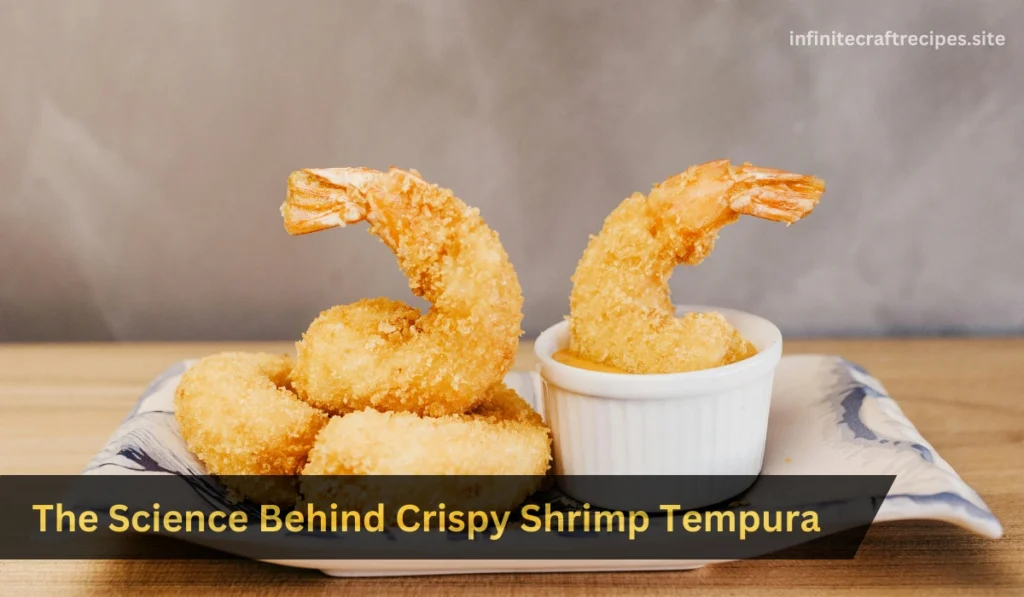
For your shrimp tempura to be crunchy, two key factors must be in play: fast vaporization and minimal gluten formation. Understanding these concepts is crucial for achieving the perfect crunch.
1. Cold Batter: The Secret to a Delicate Crust
Using ice-cold batter (below 40°F) slows gluten development, which is essential for a light and airy texture. Gluten, a protein in flour, can make your tempura chewy if overdeveloped. Traditional tempura contains only 5% gluten, compared to 12% in all-purpose flour batters. This is why using the right flour and keeping your batter cold is crucial.
2. Quick Frying: Locking in Crispiness
Frying at the ideal temperature (340°F–360°F) seals the batter quickly, preventing oil absorption. If the oil is too cold, the batter absorbs excess oil, resulting in greasy tempura. If it’s too hot, the exterior burns before the shrimp cooks through.
Common Mistakes That Ruin Shrimp Tempura
Even small errors can lead to disappointing results. Here are the most common mistakes and how to fix them:
1. Using Warm Batter
Warm batter activates gluten, leading to a chewy, dense coating.
Fix: Chill your batter bowl and use ice cubes in the water. Keep the batter in the fridge until you’re ready to fry.
2. Overcrowding the Pan
Adding too many shrimp at once drops the oil temperature, causing greasy tempura.
Fix: Fry in small batches (3–4 shrimp at a time) to maintain consistent heat.
3. Incorrect Oil Temperature
Oil that is less than 340°F is absorbed into the batter, while oil that is more than 360°F burns it.
Solution: Measure the temperature with a thermometer and adjust as needed.
4. Using the Wrong Flour
All-purpose flour produces denser batter because it contains more gluten.
Alternatives:
- Tempura flour: Low-gluten and pre-mixed for convenience.
- Cake flour: Contains just 7–9% gluten, making it a great alternative.
5. Skipping the Ice Water Trick
Room-temperature water activates gluten, which makes the batter dense.
Fix: Use ice-cold water and mix minimally—lumps are okay! Overmixing creates gluten, which is the enemy of crispy tempura.
How to Fix Soggy Shrimp Tempura
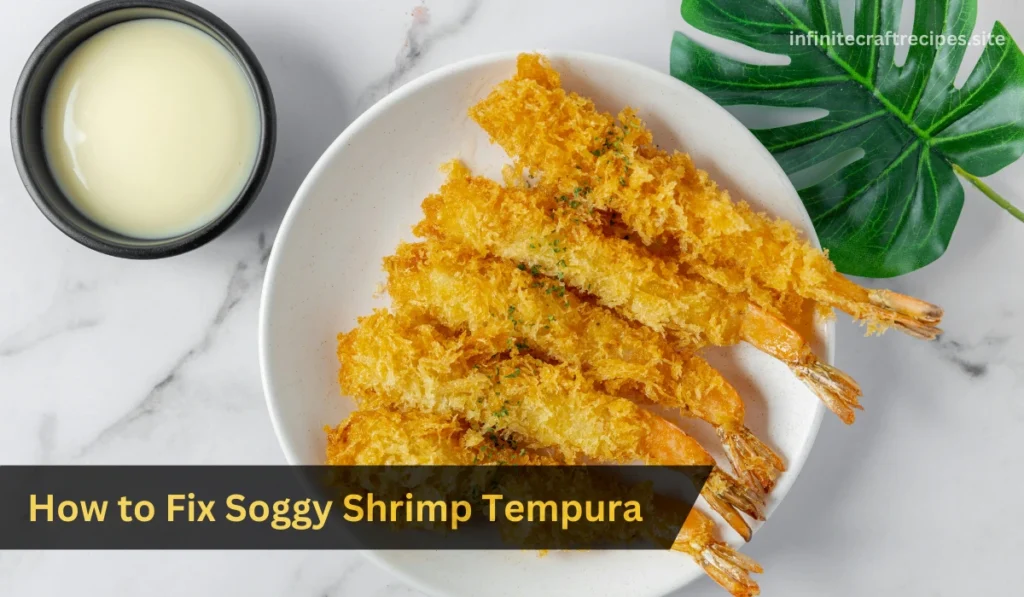
If your tempura turns out soggy, don’t worry. Here’s how to salvage it and prevent future mishaps:
1. Adjust Oil Temperature
Maintain the oil temperature between 340°F–360°F. Reheat the oil between batches to ensure consistent frying conditions.
2. Drain Properly
Use a wire rack instead of paper towels to drain your tempura. Paper towels trap steam, which can make the coating soggy.
3. Fry Small Batches
Overcrowding the pan can drop the oil temperature by up to 50°F, leading to greasy results. Stick to small batches for the best texture.
Choosing the Right Shrimp for Tempura
The type and size of shrimp you use can significantly impact your tempura’s texture and flavor.
Tempura Shrimp Size
- Medium shrimp (16–20 count): Good for bite-sized tempura.
- Large shrimp (10–15 count): Great for a heartier dish.
Prep Tips
- Devein and butterfly the shrimp: This helps the shrimp cook evenly and enhances presentation.
- Pat the shrimp dry: Too much moisture in the shrimp will make the batter soggy.
Perfecting the Tempura Batter
The batter is the heart of crispy shrimp tempura. Here’s how to get it right:
Flour-to-Water Ratio
A 1:1 ratio of flour to ice water works best. For example, use 1 cup of flour and 1 cup of ice water.
Mixing Technique
- Mix gently: Stir the batter 10–12 times. Overmixing creates gluten, which leads to a chewy texture.
- Lumps are okay: A few lumps in the batter are perfectly fine and even desirable.
Additives for Extra Crispiness
- Vodka: Adding a splash of vodka to the batter helps it crisp up faster because alcohol evaporates more quickly than water.
- Baking soda: A pinch of baking soda can create tiny air pockets, making the batter lighter.
Mastering the Frying Technique
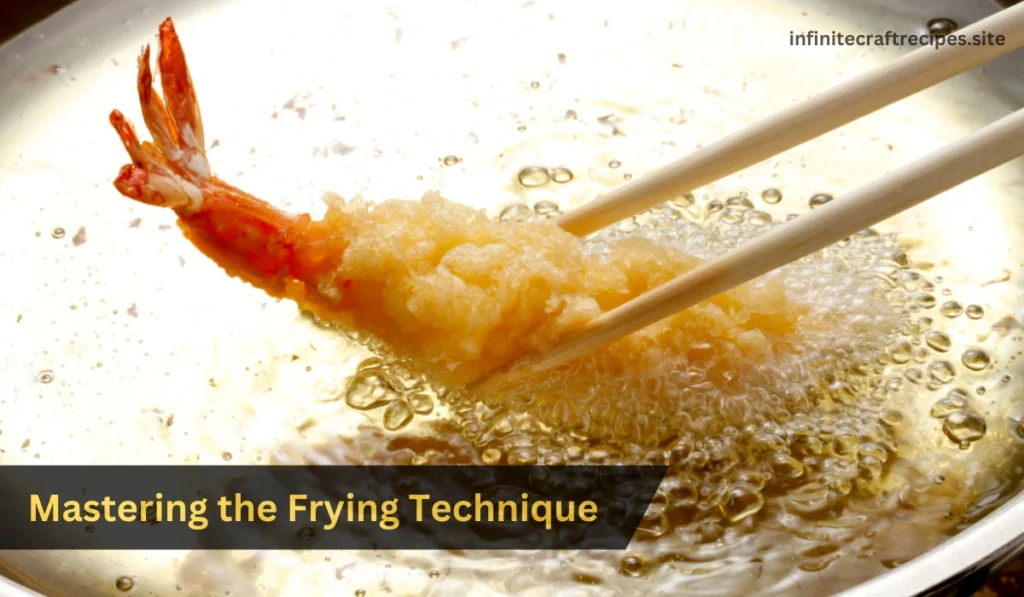
Frying tempura is as much about technique as it is about ingredients. Follow these steps for perfect results:
1. Heat the Oil
Use a heavy pot, such as cast iron, that retains heat well. Fill it with 2–3 inches of oil and heat it to 340°F–360°F.
2. Dip and Fry
- Dip the shrimp thinly: If the batter is too thick, it will be heavy and greasy.
- Fry for 2–3 minutes: Cook until the tempura is golden brown and crispy.
3. Temperature Control
Monitor the temperature using a thermometer. Calibrate your thermometer to ensure accuracy.
Preparing and Storing Shrimp Tempura
Dipping Sauces
Serve your tempura with a traditional dipping sauce:
Tempura Dipping Sauce: Combine ½ cup dashi, ¼ cup soy sauce, and 2 tbsp mirin.
Reheating Leftovers
To revive leftover tempura, use an air fryer at 350°F for 3 minutes. This restores crispiness without making it greasy.
Additional Tips and Tricks for Perfect Shrimp Tempura
1. Use Fresh Ingredients
Fresh shrimp and good-quality flour make all the difference. Where possible, avoid frozen shrimp.
2. Double Fry Technique
For extra crunch, fry the shrimp once at a lower temperature (320°F) and again at a higher temperature (375°F) to crisp the exterior.
3. Experiment with Flavors
While traditional tempura is delicious on its own, you can add a dash of sesame oil or a pinch of cayenne pepper to the batter for a unique flavor profile.
4. Keep Your Workspace Clean
Tempura requires quick work, so prepare your shrimp, batter, and frying station before heating the oil.
5. Practice Makes Perfect
Don’t get discouraged if your first few attempts aren’t perfect. Like any culinary skill, making tempura takes practice. Keep experimenting and refining your technique.
Final Notes
Making perfect crispy shrimp tempura at home can be incredibly rewarding. By understanding the science behind it and avoiding common mistakes, you can achieve restaurant-quality results. Remember, the key lies in using cold batter, maintaining the right oil temperature, and mastering your frying technique.
At Infinite Craft Recipes, we’re passionate about helping you elevate your cooking skills. Whether you’re a beginner or an experienced home chef, mastering shrimp tempura is sure to impress your family and friends. So, roll up your sleeves, grab your ingredients, and get frying!
FAQs About Shrimp Tempura
1. Why is my shrimp tempura soggy?
Sogginess is due to warm batter, low oil temperature, or overcrowding the pan.
2. Can I use all-purpose flour for tempura?
Yes, but cake flour or tempura flour is better for a lighter texture.
3. What oil should I use for tempura?
Neutral oils such as peanut or canola with high smoke points (400°F+) are best.
4. How long does it take to cook shrimp tempura?
Shrimp tempura cooks in 2–3 minutes per batch.
5. Do I need a deep fryer to make tempura?
No—you can use a deep skillet with 2–3 inches of oil.
Conclusion: Crispy Shrimp Tempura Mastery
If you follow these tips, you can make crispy homemade shrimp tempura:
- Use cold batter and the right flour.
- Maintain precise oil temperatures.
- Fry in small batches and drain properly.
At Infinite Craft Recipes, we believe that anyone can achieve restaurant-quality tempura at home. Avoid common mistakes like overmixing or using warm water, and experiment with these techniques to perfect your dish.
Call-to-Action
Ready to try your hand at crispy shrimp tempura? Gather your ingredients and follow our step-by-step guide to nail that perfect crunch tonight. Don’t forget to share your results with us at Infinite Craft Recipes—we’d love to hear about your tempura triumphs!
Happy cooking! 🍤

